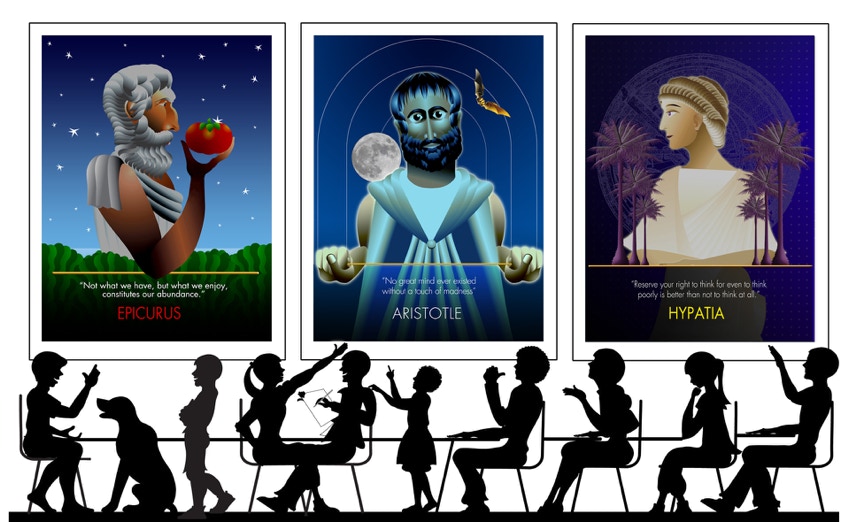Pacifikon is devoted to the promotion of outstanding digital images making the art form every bit as
valid as lithography, etching, wood block printing, linoleum block printing and screen printing.
The technique of duplicating images goes back several thousand years to the Sumerians (c.3000 bce), who engraved designs and cuneiform inscriptions on cylinder seals (usually made of stone), which, when rolled over soft clay tablets, left relief impressions. They conceived not only the idea of multiplication but also the mechanical principle, the roller, which in more sophisticated form became the printing press. Today, artists, writers and scholars employ advanced digital equipment to communicate significant cultural, scientific, and literary concepts and provide a repository to guard against their loss to future generations. Oddly, there are those who would devalue the contributions of these contemporary digital marvels in relation to the Sumerian’s stone cylinders.
Some argue that digital artists frequently fail to maintain physical contact with their product, thus introducing an impersonal and random level of control. We would agree if an artist, willing to accept whatever was produced, merely handed over digital files to a printer. This is not a typical practice. Most serious digital artists tend to employ far greater control over their work than printmakers of the past, simply because they can. Adjusting a digital file is far easier and more economical than burning new screens, reworking new plates or carving new wood blocks.
A other objection by the critics of digital art is that the end product seldom reflects the masterly execution of a craft. This raises the age-old debate over craft vs art. Even Velåzquez garnered little more respect in the court of Philip IV than a good hair dresser or stone mason. We thought the Impressionists had put this tired thesis to rest. Painting is no more about paint than art is about pixels. Art is about the expression of the human condition while paint and pixels form the humble techniques of expressing those truths. Moreover, the artist who wishes to produce an exemplary wood block print without the pain and agony of carving would be well advised to employ a version of Adobe Creative Suite (ACS). It is possible to produce a convincing and highly detailed wood block print with ACS while virtually impossible to replicate ACS’s vast repertoire with wood and chisel.
A third objection we encounter involves the destruction of “plates” or the means of guaranteeing the limitation of an edition. The illustrious world of art has never been free of charlatans but the incredible quality with which a digital work can be reproduced seems to have encouraged the trade in supernumerary impressions (more impressions per edition than advertised.) The recent practice of “estate signed impressions” by estates as notable as that of Picasso has not helped matters. Still, if one acquires a beautiful possession at a reasonable price should they not take pleasure in the fact that their neighbor also has one? This clearly demonstrates the harmful effects of buying art for speculation, not for its esthetic joy.
There is yet a fourth arrow in the quiver of the digital detractor. A small minority still clings to their Dickinson vision of an artist locked away in their frigid garrets, up to their elbows in ink and near starvation. If you are among those who find this image romantic, I’m compelled to point out that, like everything, art and the methods by which it is expressed have evolved. The rise of Impressionism and Abstract Expressionism was directly related to the advent and development of photography. Merely count the hoards of portrait and landscape artists who were liberated from the doldrums of their reportage-like careers and thus discovered new heights of self-expression. Picasso’s Blue Period was probably not the product of psychic depression but rather the introduction of Windsor & Newton’s new and vastly less expensive blue pigments?
Finally, digital technology has brought printmaking full cycle from its 15th Century European roots when it was considered a tool to spread the images and prestige of otherwise provincial artists. The incredible quality and precision of good digital prints puts truly fine art within the grasp of most middle class families. As Renaissance artists used their painterly skills to illuminate history and religion, we hope to stimulate curiosity about those who advanced our knowledge and understanding over the ages.
Pacifikon.com is devoted to the proliferation of graphics that promote intellectual growth and the appreciation of academic excellence, both at home and at school. We welcome suggestions from parents, teachers and students.

